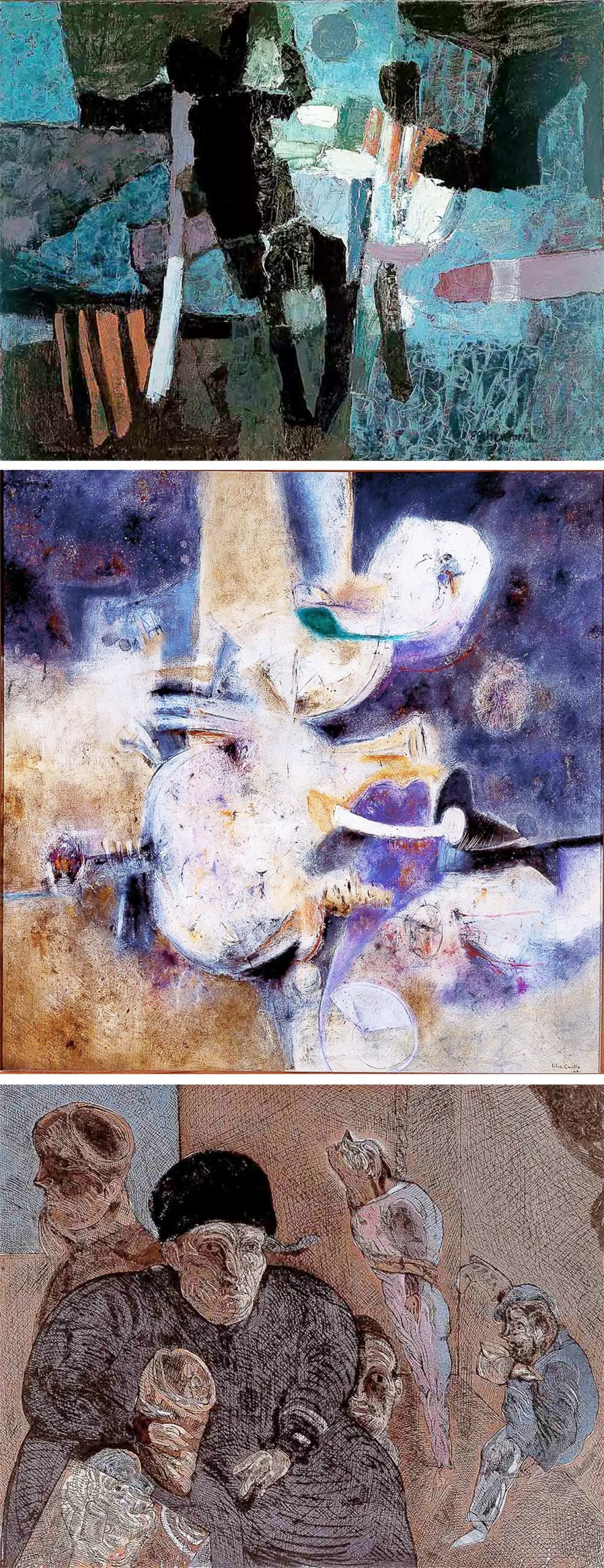Mexican Muralism: Modern Art or State Propaganda?
The Mexican Revolution transformed Mexico. One response to the changes was Mexican Muralism.
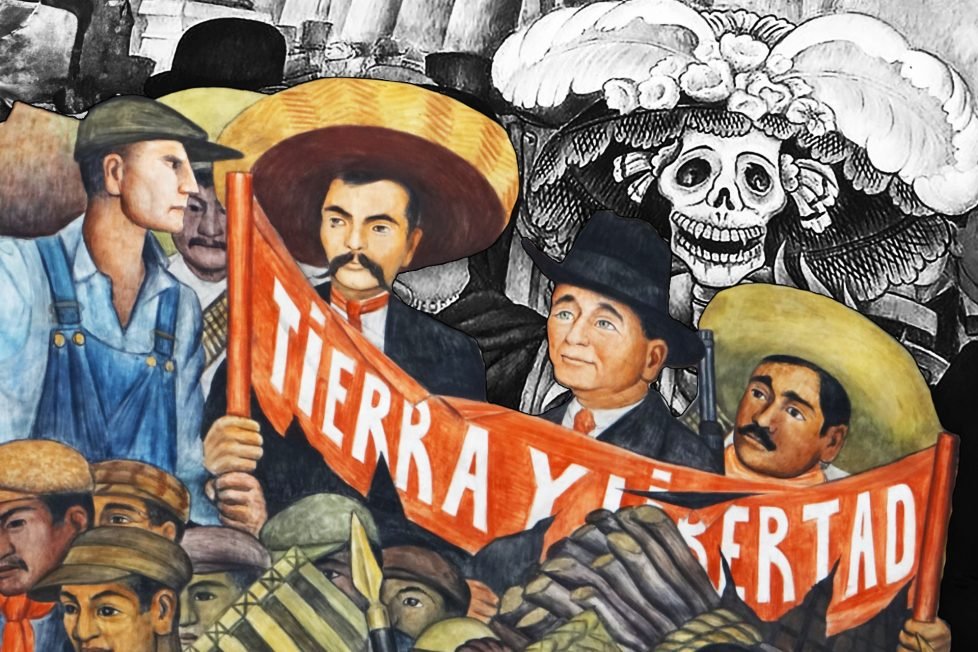
The Mexican Revolution transformed Mexico. One response to the changes was Mexican Muralism.

Table of Contents
ToggleThe Mexican Revolution was, perhaps, the most defining chapter in Mexico’s modern history. Spanning a whole decade, the Revolution began in 1910 after more than three decades of an authoritarian regime under General Porfirio Diaz. The dramatic transformation resulted in several responses, ranging from economic reforms to a major art movement.
By the middle of the 20th century, Mexico was a very different country than the one it was at the turn of the century. The country mostly focused on domestic affairs, and was noticeably absent in the First and Second World Wars. Internally, Mexico had enough on its plate for a change in its political, economical, social, and cultural landscapes. Mexican Muralism, thus, was birthed from the entropy of a growing, changing nation.
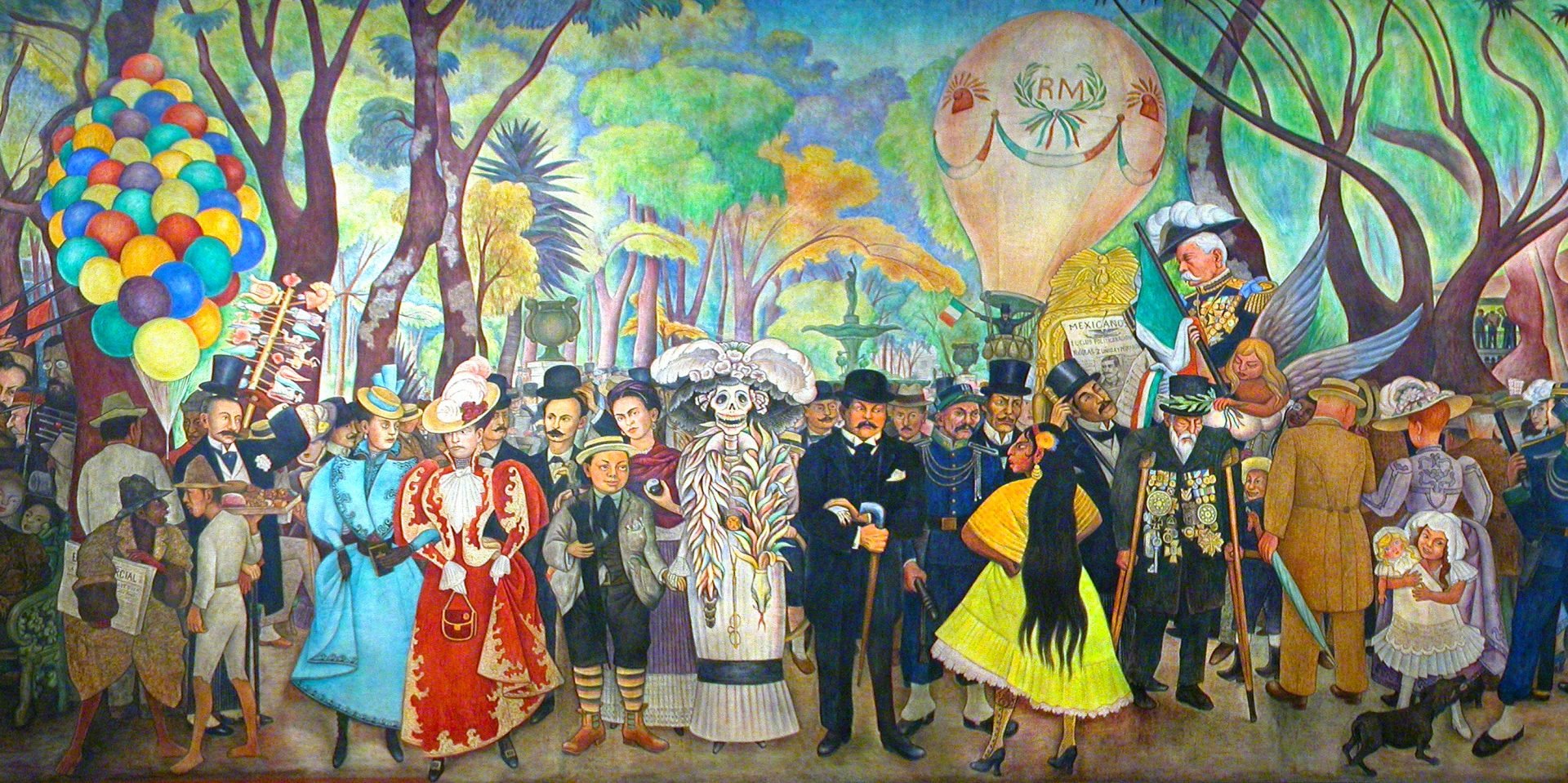
For most of the 19th century, Mexico found itself in a never-ending spiral of chaos and conflict. The country began the century as a Spanish colony, then gained its independence, was invaded multiple times by foreign adversaries, lost well over half of its territory, and survived a major civil war that re-established and appeared to consolidate the republic. But the national hardships were far from over. The return of democracy was short-lived and by the beginning of the Mexican Revolution, a dictatorship, backed up by the major powers, had thrived under the so-called Pax Porfiriana.
Behind the apparent peace, Mexico suffered in a forced silence. The Diaz regime had successfully industrialized the country but at a great price. Rampant inequality, forced labor, attempted ethnocide of indigenous peoples and military repression were all justified in the name of “progress”. But the regime eventually fell, thanks to a coalition of revolutionaries ranging from the more moderate, and even agreeing with some of Diaz’s policies, to the radical and truly ambitious. The conflict, however, was far from over. Once Diaz had been deposed, disputes arose between the different factions. The moderate, initial leader of the Revolution, Francisco I. Madero, was himself deposed and assassinated by those still loyal to Diaz.
The revolutionaries joined forces once more and dethroned the new tyrant. But once the moderate and bigger faction reached power, it turned against the other more radical ones. The moderates sought to end whatever was left of Diaz’s regime and to correct Madero’s failures. The radicals, led by the famous Francisco Villa and Emiliano Zapata, thought the country still needed substantial and broad-reaching changes. Nevertheless, by the end of the revolution, the moderates won, and the modern Mexican state began to take shape with the promise of a new age of institutions and peace and not of warlords and conflict.

Mexican Muralism began almost immediately after the Revolution, as an initiative originating from the Mexican government to spread and teach the ideals of the revolution and the new, modern Mexican state. The revolution was seen as the culmination of the political and social demands from the broader populace: land reform, better labor conditions, democracy, all made possible thanks to the revolution. This attitude from the government dominated and permeated all levels of the state. When President Alvaro Obregon, a former revolutionary leader himself, hired Jose Vasconcelos as Secretary of Public Education, the objective was clear: to educate the populace and spread the ideals of the revolution through muralism.
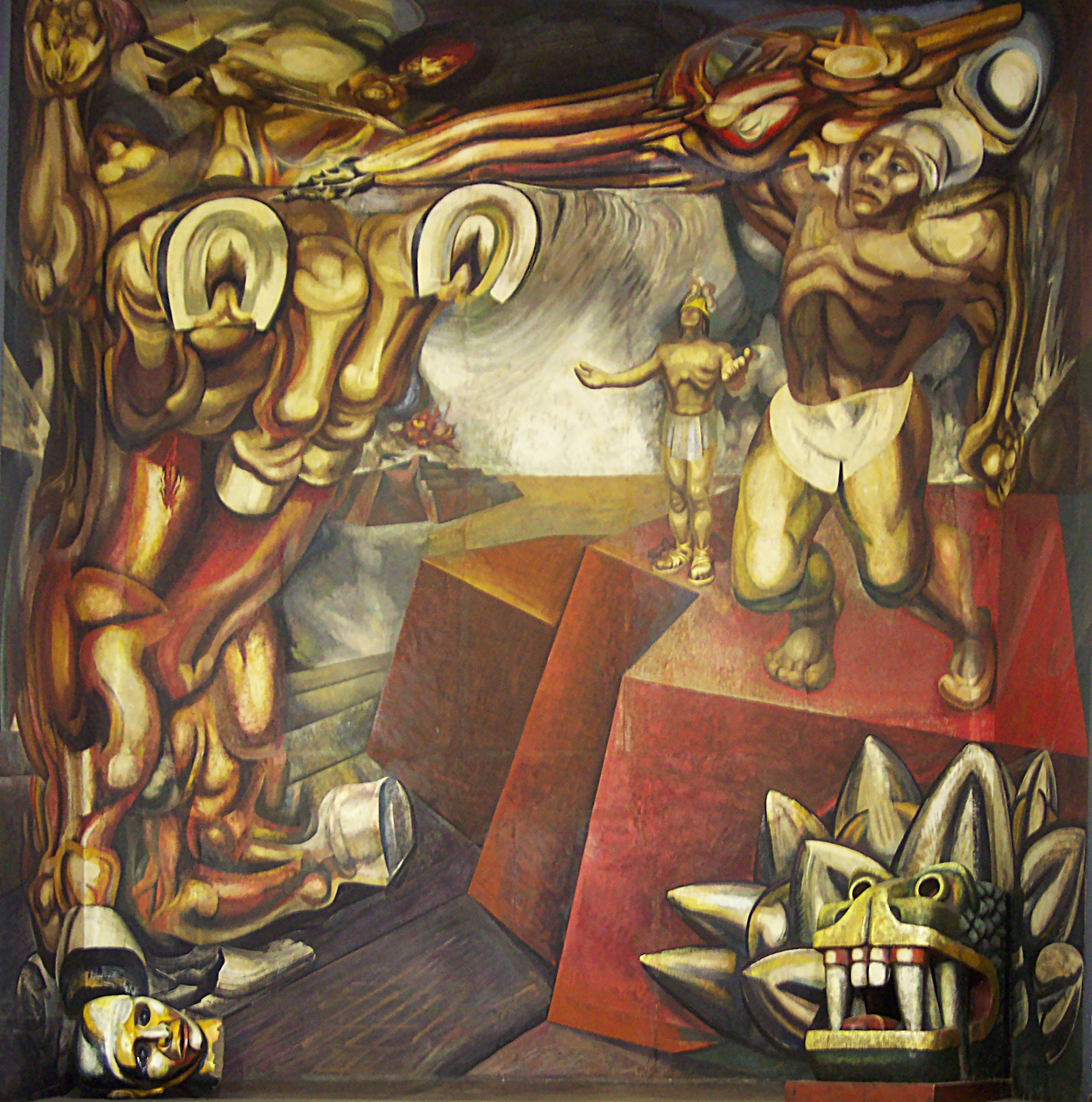
Muralism had been a part of Mexican culture for centuries. A tradition of mural paintings can be traced back to some of the first civilizations inhabiting central Mexico. During the Spanish colony, murals were used by the church to evangelize and educate. Yet the new age of murals that began with Mexican Muralism surpassed any preceding use. By the end of the Mexican Revolution, the country was still largely illiterate, thus, murals were seen as the ideal medium for spreading a message to the public.
Mexican Muralism sought to create an art form that reflected the Mexican lifestyle, history, and reality. A particular art style was born even during the Diaz regime, with Jose Guadalupe Posada and Gerardo Murillo. Posada was a popular engraver and caricaturist who criticized the Diaz regime with a sharp yet folkloric style. He created the famous La Catrina, with a critique of the higher classes of Mexico City and their foreign tastes. Meanwhile, Murrillo, better known as Dr. Atl, had worked with the regime arguing in favor of a local art form instead of imitating the European style as was the norm.
Oftentimes, when talking about Mexican Muralism, three names immediately enter the conversation: Diego Rivera, Jose Clemente Orozco, and David Alfaro Siqueiros. Considered to be the “three great muralists”, these three men outshined the rest. While their work is greatly valued and admired, their privileged position can be attributed to their closeness to power rather than them climbing up the artistic ranks on their own merits. There were many others, like Rufino Tamayo, Fermin Revueltas, Juan O’Gorman, Aurora Reyes, but they never enjoyed the same status as the big three.
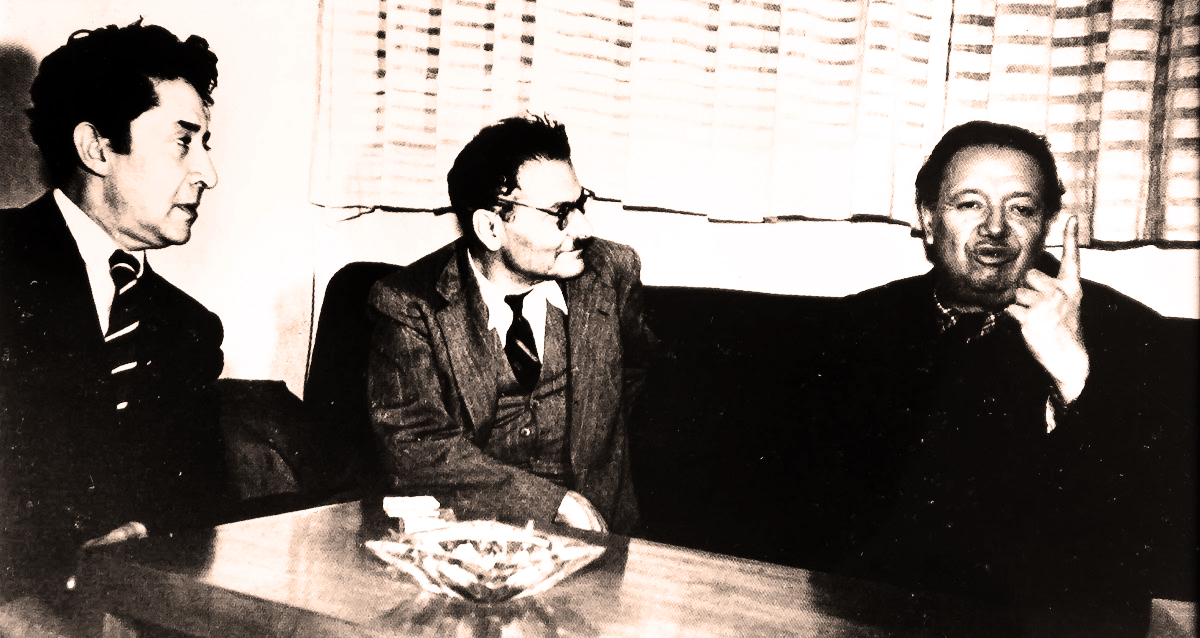
Diego Rivera, arguably the most famous out of all the muralists, likely due to his relationship with Frida Kahlo, was classically trained at the Academy of San Carlos and throughout his many studies in Europe and the world. He had an important cubist phase that brought him closer to the modernist vanguard in Europe. He was the favorite out of all the muralists. When Orozco and Siqueiros had lost funding, Rivera kept his. Rivera’s murals are some of the most famous: Sueño de una tarde dominical, La creacion, Epopeya del pueblo mexicano, El hombre controlador del universo.
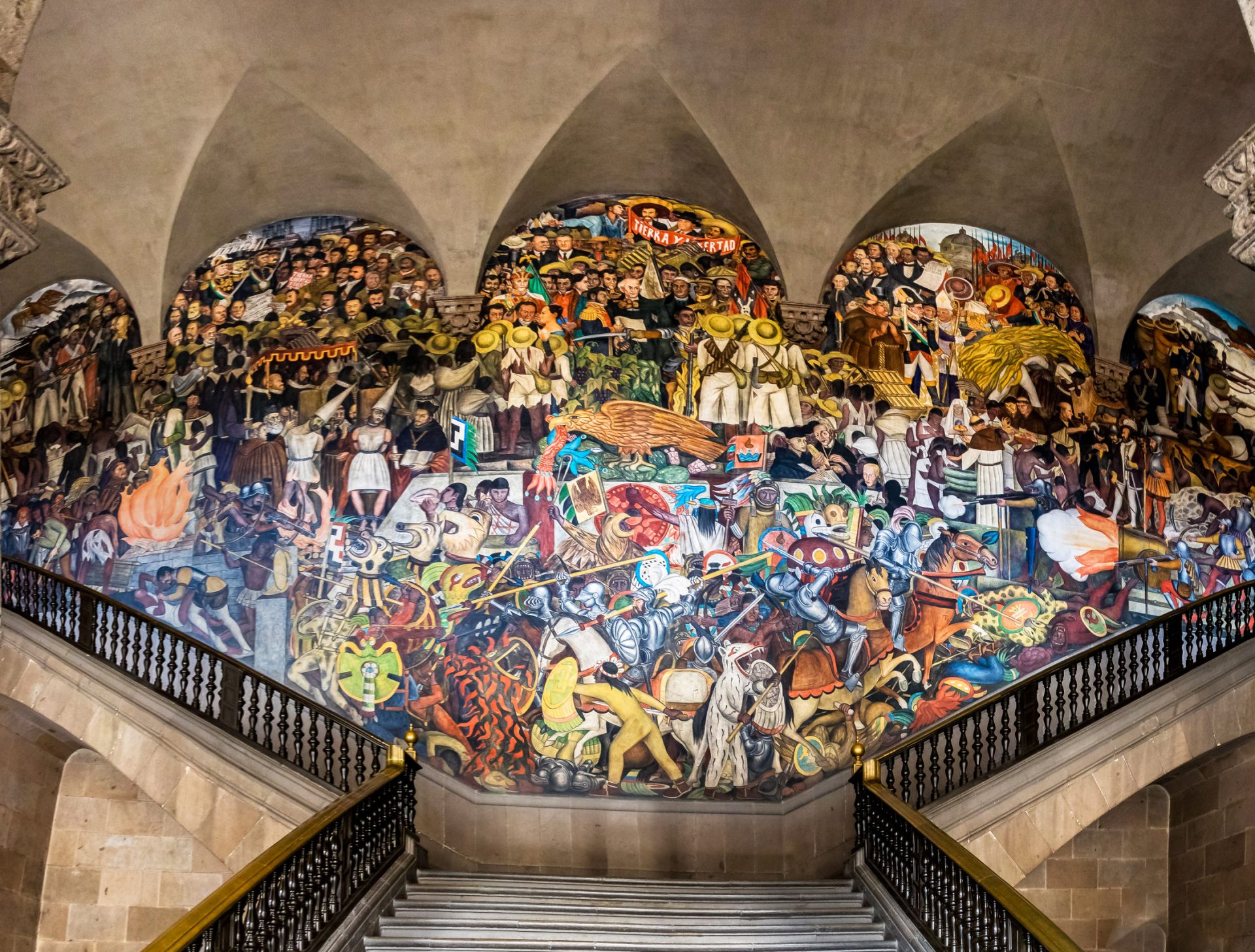
Clemento Orozco was born in the state of Jalisco but moved at a young age to Mexico City. He then trained at the same school as Rivera. He traveled to the United States where he painted murals for Pomona College in California, Dartmouth College, and the New School in New York. He eventually returned to Mexico where he painted for El Palacio de Bellas Artes, El Colegio Nacional and other institutions. David Alfaro Siqueiros also traveled through Europe like Rivera, but unlike him, he participated in the Revolution. Siqueiros was known for his dynamic art and abstract forms. He is said to have influenced Jackson Pollock during his travels to the United States.
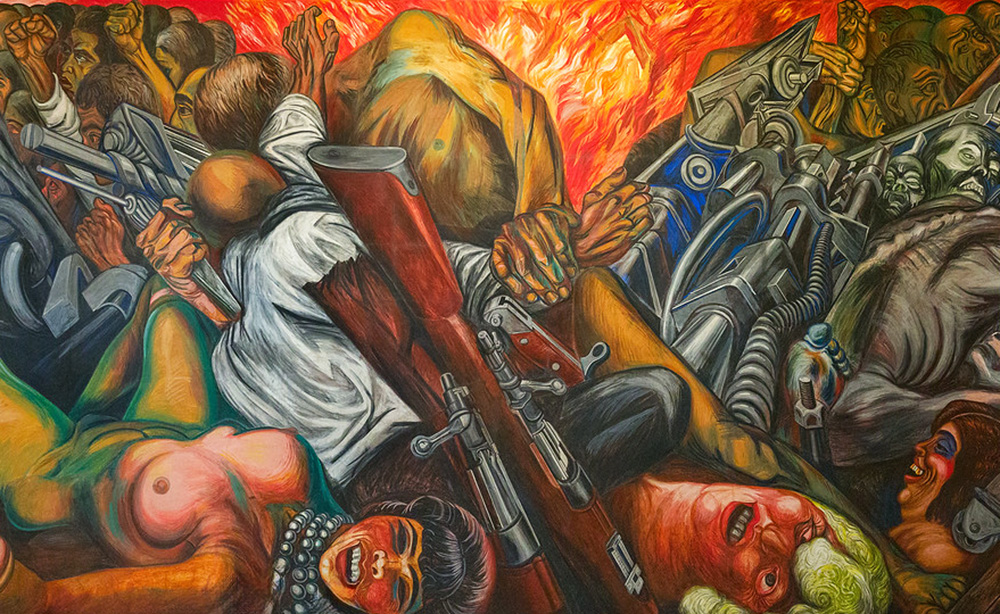
Initially funded and sponsored by the new revolutionary government, Mexican Muralism began when a new generation of Mexican artists gained support of the state in their effort to create a truly national art movement. But while muralism was being created, the rest of Latin America was experimenting with their own forms of expression in architecture, painting, poetry, literature and the like. An ambitious form of modern art was appearing under the hopes for an authentic Latin American language of expression. From the regionalism seen in some of Tarsila do Amaral’s work to the geometric abstraction in Joaquin Torres-Garcia’s own production.
Mexican Muralism portrayed a variety of themes that, both the Mexican government and the respective artists, believed were key to understanding the new paradigm the country was facing. Nationalism, patriotism, race, indigenous peoples, the working class, land reform, and Mexican history were all majorly present in some form in most murals. But it differed greatly from the modern art seen in the rest of Latin America. Mexican Muralism depicted social realism through an intrinsically political lens that ultimately served a purpose. Meanwhile, the artistic works in other parts of Latin America were more ambitious in their forms with surrealist and constructivist forms gaining ground.
Yet Mexican Muralism is still considered a true modernist art form. Perhaps the greatest criticism to Mexican Muralism was not exactly the form and appearance, but rather the way it happened to come about and how it dominated the artistic landscape. Muralism was the law of the land and hardly any other trend became as accepted and mainstream in the country. Though some artists, like Francisco Goitia, were still able to work outside of muralism. The prevalence of muralism lasted for decades but by the end of the 20th century it began to lose ground.
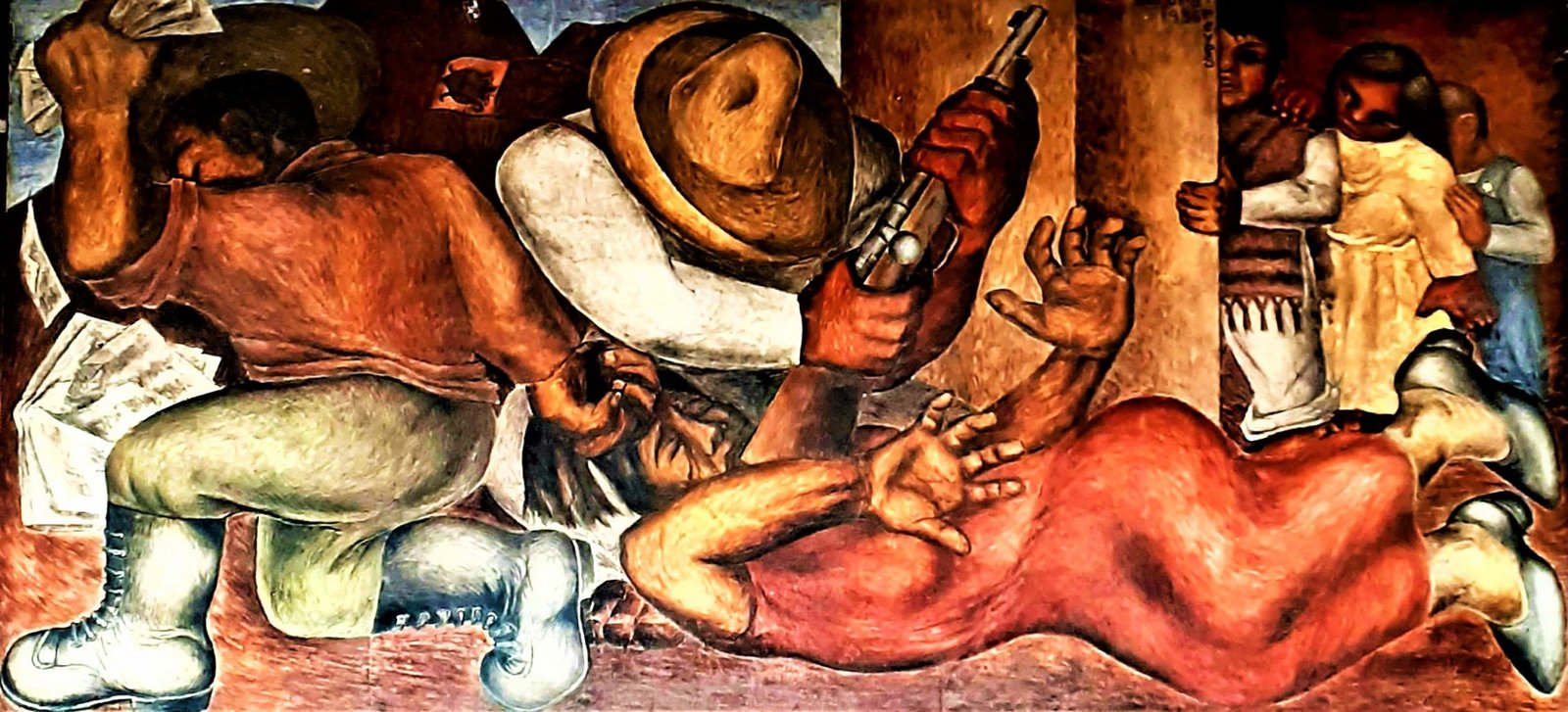
In 1956, Jose Luis Cuevas published a manifesto opposing Mexican Muralism: La Cortina del Nopal. Cuevas was a Mexican artist that had felt alienated by the artistic landscape of Mexico, where only muralism was supported, and other art forms were largely ignored or abandoned. Cuevas argued he and his generation were unable to carry on with their artistic ambitions. The Breakaway Generation, or Generacion de la Ruptura, was thus born.
The break had become a necessity. The ideas spread under muralism were seen as no longer fitting under the changing landscape of modern Mexico. The exaltation of Mexican identity and the closeness of muralism to power was a sharp contrast in a country that looked very differently than when the revolution ended. Separated by time, artists and intellectuals recognized and criticized the failures of the revolutionary governments and the one-party state that had been created. Many promises of reforms and structural changes were never fulfilled. As a result, the revolution began to be analyzed and critiqued in retrospect.
The Breakaway Generation was never an organized movement, but rather a general spirit among artists that challenged the hegemony of muralism. It was never clearly defined and the relations between the artists were largely informal, unlike the social circles of the mainstream muralists. Yet the Breakaway Generation was still an important moment in Mexico’s art history as it helped transition the country’s artistic landscape into new modern and contemporary forms.
